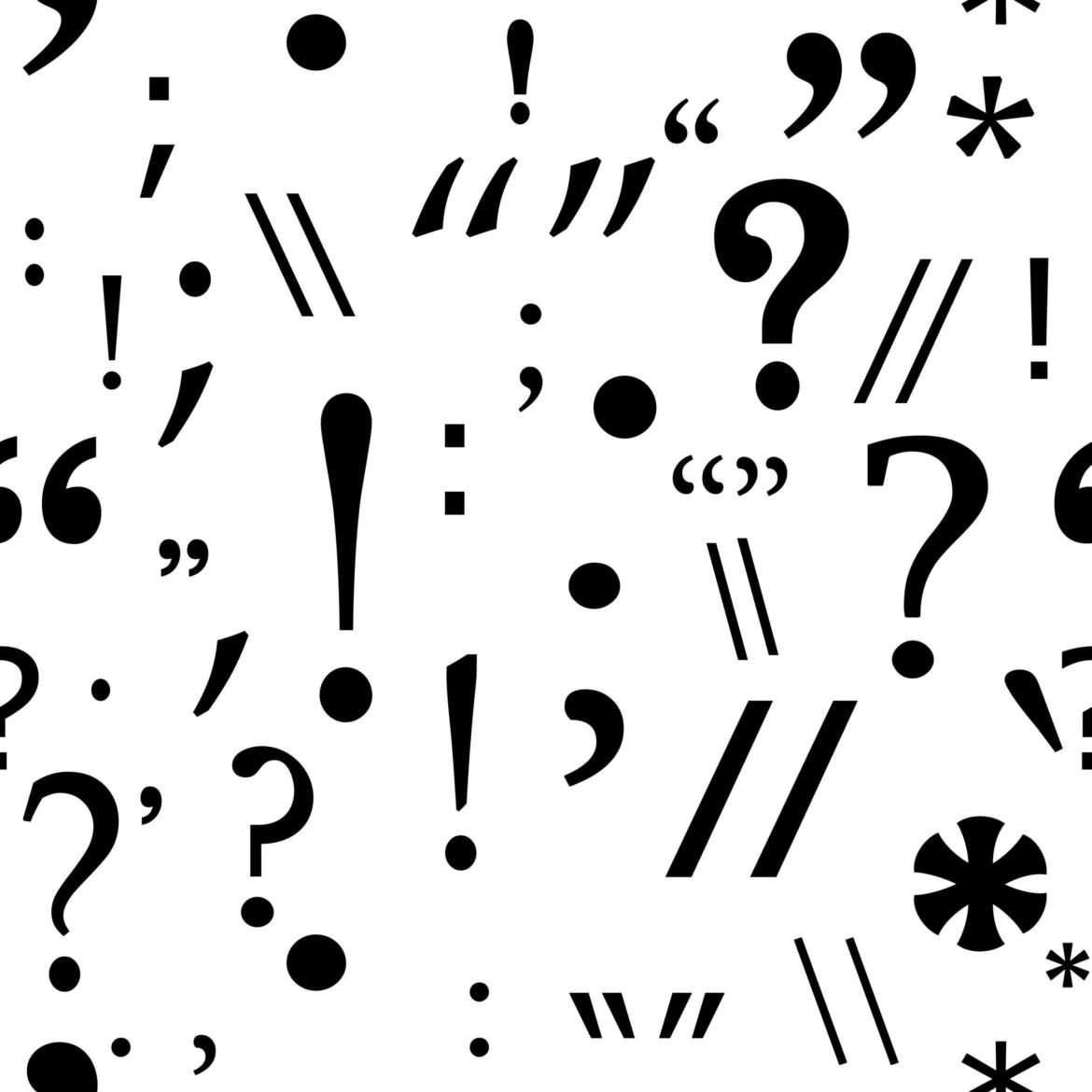When my partner reads my fiction—he’s always my first reader—he invariably rolls his eyes. He doesn’t understand why I’m so stingy with commas. This has happened to us enough times that we merely laugh about it. I’ve been a punctuation rebel for a long time, insisting on a minimalist approach. Except for periods and the occasional comma, the fewer marks of any kind, the better.
This preference developed quite a while ago. I was given to understand that fiction writers are “allowed” to break the rules of punctuation (and grammar) as long as they understand them. So I was free, if I wanted, to use only the punctuation that pleased me, eschewing commas to separate strings of adjectives, and often choosing comma splices to attach two sentences. I became gleefully defiant.
I remember clearly when I first encountered the work of Virginia Woolf in high school and college. Her liberal use of the semi-colon amused me. It seemed so formal and so unnecessary, even offensively micromanaging of the reader. Much as I adored her work, I was not a fan of her punctuation choices. I turned my back on the semi-colon and the even more arcane-seeming colon. In using a colon, I would have felt like I was donning a petticoat or a bowler hat.
I can’t pinpoint exactly when my rapprochement with the semi-colon began—no doubt reading other writers who were not so adversarial about punctuation made a difference—but at some point I softened, realizing semi-colons can be useful, serving the double purpose of synthesizing and dividing. When a semi-colon connects two sentences it invites the reader to look closely at the relationship between the two sentences and possibly the reader will wonder why the writer chose not to connect them with the word “and.” There is a subtle but potent difference in that choice. There are also times when the semi-colon is absolutely imperative for clarity. In lists, for example. Contemplate how deleting the semi-colons would confuse the meaning of the following sentence. “For Thanksgiving we usually invite my brother, Ed; my sister, Gloria; my three cousins, Joe, Patrick, and Maisie; and our neighbors, John and Beth.” With the semi-colons, the headcount is seven; without the semi-colons the count could be twelve or more, depending on how many neighbors there are!
Since reacquainting myself with the semi-colon, I’ve been delighted to have it in my toolkit, though there are still moments when I choose not to use it. I’m thinking of high intensity moments in a story when simplicity on the page often seems important in drawing the reader along. Punctuation introduces pauses that can slow the narrative down.
Punctuation must be understood for its visual impact as well. While we don’t usually think of writing as a visual medium, the way a page looks even before the words are decoded, evokes a response. I recoil from a page containing a block of text without indentation. I feel as if the writer is making a kind of demand I might not want to honor. Similarly, a page with many indentations makes me feel micromanaged by the writer—maybe it feels as if she’s forcing me into drawing certain conclusions, or she’s trying too hard for effect. These reactions may be subliminal, but I think we all have them.
Punctuation is always a direction from the writer to the reader. It shows the reader what the writer thinks is important. A simple period, for example, indicates the end of a thought, and the period is usually placed after the most important word or phrase of the sentence; the important material always comes at the end. Without the period a certain emphasis would be lost. I spend a lot of time rearranging words to make sure the emphasis is on that final word before the gatekeeping period.
Because of my somewhat unconventional approach to punctuation, the copy-editing process has often been torturous for me. Copy editors, with their Chicago Manual of Style guides in hand, represent a pinnacle of scholarly rectitude. A properness I have often glibly rejected. But working with good copy editors has humbled me. When a copy editor on my most recent book pushed me to examine sentence after sentence that might benefit from a colon, I finally had to agree she was right. There’s efficiency and clarity in a colon. Look at this, it says. Why had I been rejecting such elegant economy for so long?
And so, I’ve begun using colons too. Not everywhere. Not all the time. It has to not interfere with the emotional content on the page. And it has to be used at a moment when I’m okay with directing the reader’s attention somewhat aggressively. But the important thing is: I’ve come to appreciate the usefulness of colons. And in doing so I’ve come to understand something important about what punctuation is: It isn’t only a set of formal rules to be embraced or rejected; it’s a fine-toothed tool for shading the emotional import of the sentences and, ultimately, the whole work.
I wish I could discuss my insights with my 7th grade English teacher, Mrs. Mahoney. We all adored her. She was a stickler about a lot of things. She made us memorize all the prepositions and the Quality of Mercy speech from The Merchant of Venice. She gave us weekly vocabulary tests. (Benevolent and beneficent are words I learned under her tutelage.) But she was also a passionate afficionado of theater and acting and poetry and art. She loved telling us the story of how she was acting on stage when her appendix burst. Instead of rushing off, she insisted on continuing to the end of the play. She was someone who understood—as I do now—the value of knowing how to use the rules, as well as knowing when to flout them.

Add Comment